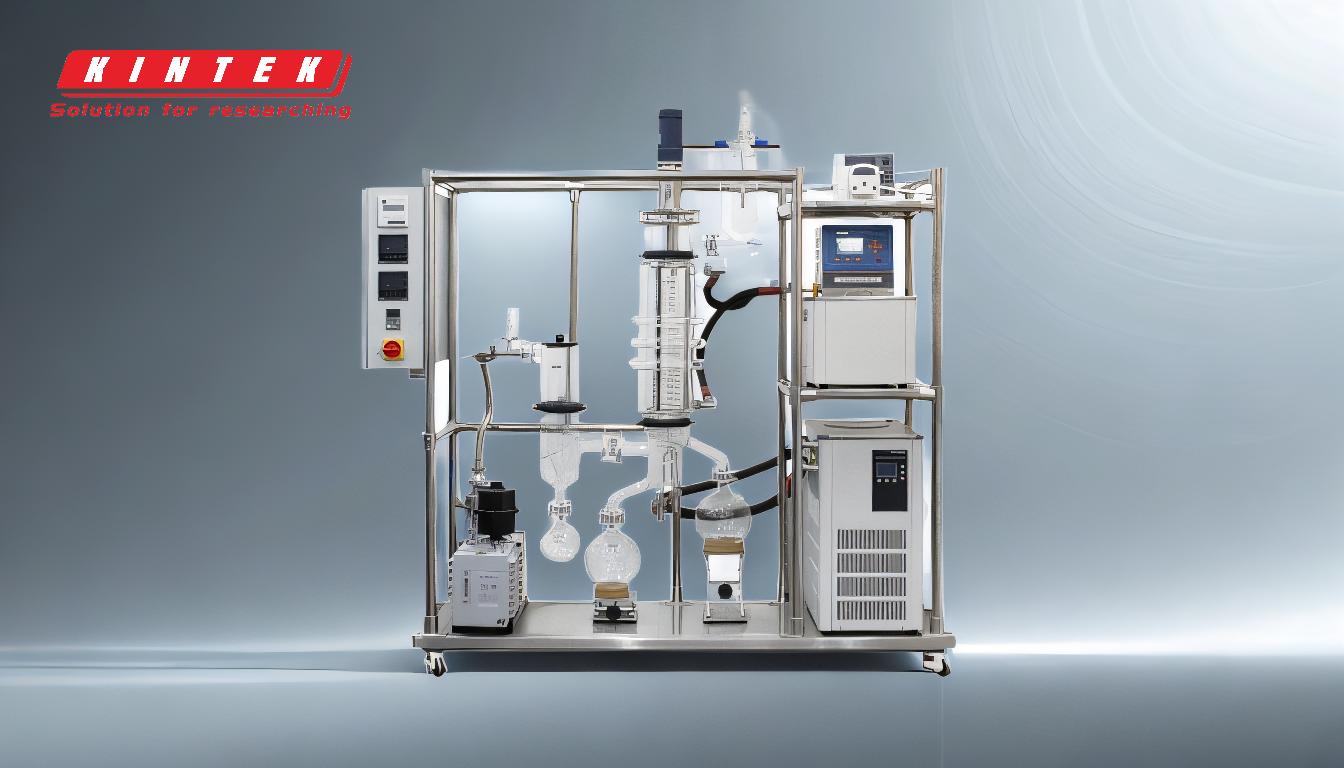A rotary evaporator (rotovap) is designed to decrease pressure within its system to facilitate the efficient removal of solvents from samples. By creating a vacuum, the rotovap lowers the boiling points of solvents, enabling evaporation at lower temperatures. This process is particularly beneficial for heat-sensitive materials, as it minimizes the risk of thermal decomposition. The reduced pressure environment allows for quicker and more controlled solvent removal, making the rotovap an essential tool in laboratories for tasks such as distillation and solvent recovery.
Key Points Explained:

-
Purpose of a Rotovap:
- A rotovap is primarily used to remove solvents from samples through evaporation. This is particularly useful in chemical and organic laboratories where separating solvents from reaction mixtures is a common task.
- The device is designed to handle volumes up to 3 liters, making it suitable for a range of laboratory applications.
-
Pressure Reduction Mechanism:
- The rotovap operates by creating a vacuum within its system, which significantly reduces the internal pressure. This reduction in pressure is crucial for the evaporation process.
- Lowering the pressure decreases the boiling points of the solvents, allowing them to evaporate at much lower temperatures than they would under normal atmospheric pressure.
-
Benefits of Reduced Pressure:
- Lower Boiling Points: By reducing the pressure, the rotovap enables solvents to boil at lower temperatures. This is particularly advantageous for heat-sensitive materials that might decompose or degrade at higher temperatures.
- Efficient Solvent Removal: The reduced pressure environment allows for quicker and more efficient removal of solvents, making the process faster and more controlled.
- Minimized Thermal Decomposition: The lower temperatures associated with reduced pressure help to minimize the risk of thermal decomposition, preserving the integrity of the sample.
-
Applications in Laboratories:
- Distillation: The rotovap is commonly used for distillation processes, where it separates low-boiling solvents from compounds that are solid at room temperature and pressure.
- Solvent Recovery: It is also used for solvent recovery, allowing laboratories to reclaim and reuse solvents, which can be both cost-effective and environmentally friendly.
- Heat-Sensitive Materials: The ability to operate at lower temperatures makes the rotovap ideal for handling heat-sensitive materials, ensuring that they are not damaged during the solvent removal process.
-
Operational Efficiency:
- The rotovap's design allows for the gentle and efficient removal of solvents, making it a preferred choice in many laboratory settings.
- The device's ability to quickly remove solvents under reduced pressure conditions enhances overall laboratory productivity and ensures high-quality results.
In summary, a rotovap decreases pressure within its system to facilitate the efficient and gentle removal of solvents from samples. This reduction in pressure lowers the boiling points of solvents, allowing for evaporation at lower temperatures, which is particularly beneficial for heat-sensitive materials. The rotovap's ability to operate under reduced pressure conditions makes it an indispensable tool in laboratories for tasks such as distillation, solvent recovery, and handling heat-sensitive compounds.
Summary Table:
| Key Aspect | Details |
|---|---|
| Purpose | Removes solvents from samples through evaporation, ideal for chemical labs. |
| Pressure Reduction | Creates a vacuum to lower boiling points, enabling evaporation at low temps. |
| Benefits | - Lower boiling points |
- Efficient solvent removal
- Minimized thermal decomposition | | Applications | Distillation, solvent recovery, handling heat-sensitive materials. | | Operational Efficiency | Gentle and quick solvent removal, enhancing lab productivity. |
Discover how a rotary evaporator can optimize your lab processes—contact us today!













